Plan, execute and synthesize highly-insightful user interviews.
This is part of my workshop recipe series where I’ll be sharing methods for facilitating successful workshops. I’ll break down the essentials of a Design Sprint, Innovation Workshop, Leadership Retreats, Executive Summits, and more. Check out the others here.
Whether you are conducting a Design Sprint or simply exploring a new idea or product, the user interview is that key moment when you test your prototype.
I’ve led hundreds of user interviews in my work as an innovation consultant. Through them, I’ve made missteps, learned a ton, and created straightforward tools that help me and my team at every moment of the process.
If I had a manifesto for user interviews it would be this: A deliberate, scientific approach is critical. A consistent process, plus an unbiased mindset yields realistic feedback. Effective scoring gives clarity to the results and primes you to make strategic decisions.
Below, I share how to approach planning and leading user interviews. Skip the learning curve and learn from my experiences!
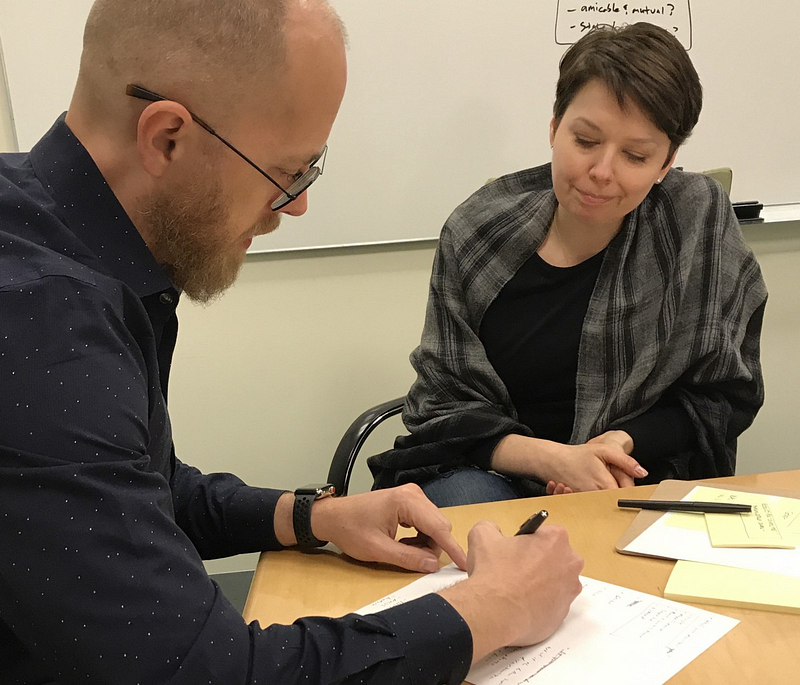
The Methods
1. Recruit Interview Subjects
Estimated time commitment: 8 hours
Identifying who needs to be interviewed is essential. Define and isolate your target persona to begin your search. Some teams have dedicated researchers or partners that handle recruiting for them. If you don’t have a dedicated resource, you’ll need to personally locate your testers.
Outcomes
- Recruit qualified interview subjects.
- Disqualify “professional” survey takers.
- Create targeted screener and ideal user types to interview.
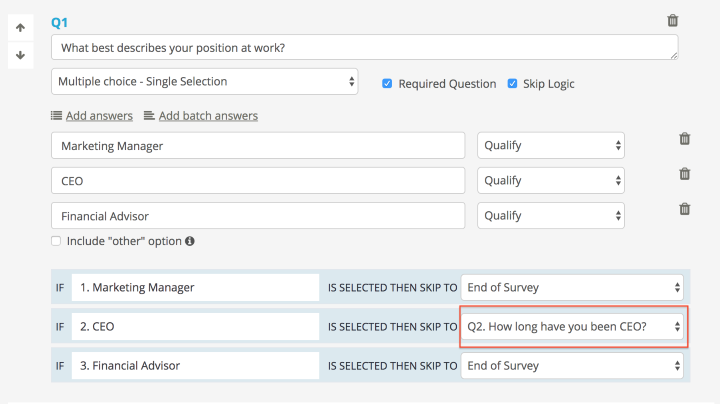
Method Steps
- Review Sprint Questions, Goal, and Target
- List out disqualifying attributes and qualities
- List out qualifying attributes
- Write a screener containing questions targeting your qualifying and disqualifying attributes
- Publish screener to http://respondent.io or similar service
- Make an interview and “floater” schedule
- Review & invite participants
- Review & invite floaters
2. Plan the Interview
Estimated time commitment: 60 Minutes
The official Voltage Control Sprint Moderator Guide helps you get the most out of your 5-Act user interviews. When testing with 5 users, it’s critical that you run the interviews properly. This template is simple to use: open it and simply make a copy and rename it. Then follow the steps included to set it up for your interview.
Outcomes
- Save time by using a prepared template for interviews.
- Document the key questions and target of the sprint for reference during interviews.
- Outlining your prototype’s click path structures the interview effectively.
- Proven context questions unlock the interview subject’s insights.
Method Steps
- Download the guide.
- Clone the guide.
- Customize the guide for your test.
- Print and study the guide.
- Follow the guide when running your interview.
PROTIP: Read more about the guide.
3. Master the Interview
Estimated time commitment: 30 Minutes
Becoming a great researcher begins with a commitment to the continual evolution of your interviewing skills. Critique your last interview — think about how it went and what you can do better. Apply your learnings to your next interview!
Outcomes
- Improve your abilities as a researcher.
- Follow repeatable rituals to make every interview consistent and effective.
- Prevent bias by remaining an independent moderator.
- Maximize for honest, unfiltered, insightful feedback from subjects.
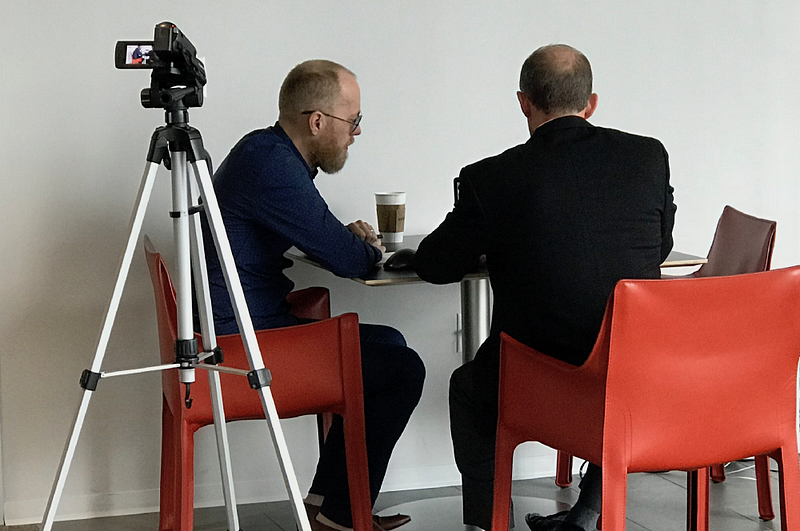
Method Steps
- Screen and select participants carefully. Make sure subjects are aligned with a target persona.
- Create an interview outline and moderator guide so you can cover all essential points in the allotted time.
- Ask context questions and build rapport with subjects to remove any pressure or stress.
- Disassociate yourself from prototype so that honest feedback emerges.
- Don’t sweat the small things, focus on value and remember to ask why.
- Avoid Yes/No questions. Leave it open-ended.
- Ask subjects to repeat themselves as necessary to validate their response.
- Be flexible, allow for new questions and paths to emerge.
- Don’t forget to debrief with subjects to get final insights. Ask questions like how they would explain the prototype in their own words and what they would change.
Want to know more? Check out my article here.
4. Conduct the 5 Act Interview
Estimated time commitment: 5 Hours
The 5 Act Interview is a structured 1-on-1 interview format developed at Google Ventures as part of their Design Sprint workshop methodology. The moderator builds a narrative arc that walks users through a high fidelity prototype to gain valuable insights. By immersing your user in the experience, you increase the chances to get the most realistic feedback.
Outcomes
- A structured, repeatable, and proven interview process.
- Open-ended, but focused, questions elicit deep understanding of a user’s experience.
- Run your usability studies with methods from Google and Google Ventures.
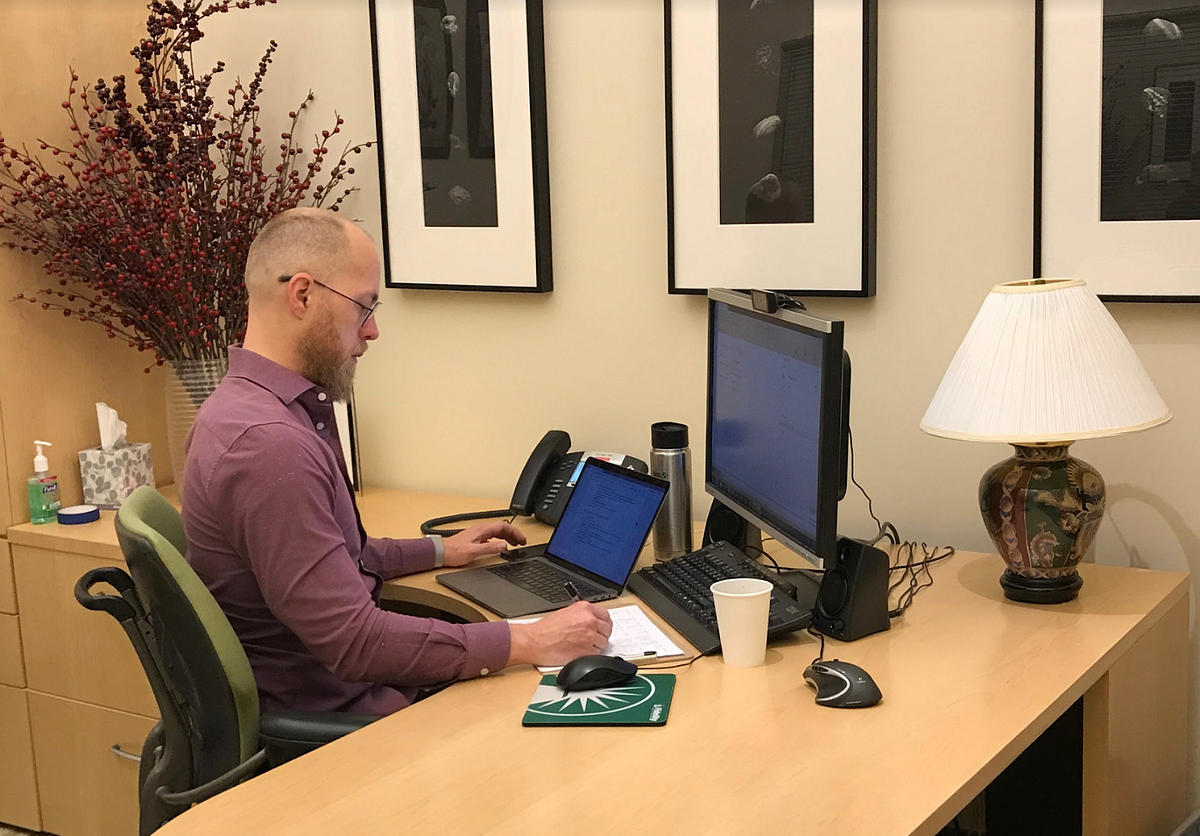
Method Steps
- Build rapport and create comfort with your participant. Start with a friendly welcome to engage the participant. Simple questions such as age, occupation, and interests build momentum at the interview’s beginning.
- Ask context questions about the current problem the user is facing or their past experiences.
- Introduce the prototype and remind the user to provide candid feedback, i.e. “I did not design this product. Nothing you say will flatter me or hurt my feelings. I am interested in what you are experiencing today.”
- Create tasks that allow you to gain insights into the questions you identified as being important to your sprint. Seek to understand the customer’s experience, not specific features. For example, ask “What would you do when you are finished shopping?”
- Follow up about the task. Ask questions like: “What were you expecting to happen?” or “What would you do next?”
- Debrief by reiterating some of the insights you have observed during the interview. Ask things like: “How would you describe this to a friend?”, “Who is this for?”, or “What would you change about the experience today?”
5. Score the Interview
Estimated time commitment: 45 Minutes
The Voltage Control Scorecard is a shared Google Sheet that all of your interview observers can use to take interview notes simultaneously. Start with digital notes so you don’t have to type up a bunch of handwritten notes later. Assign a worksheet to each sprinter, so everyone has their own workspace, yet can see each other’s work.
Outcomes
- Eliminate the need to transcribe Post-its or other analog note-taking methods.
- Make interview outcomes and results instantly visible.
- Timestamps make it easier to review the interview recordings afterward.
- A shared team workspace creates more transparency.
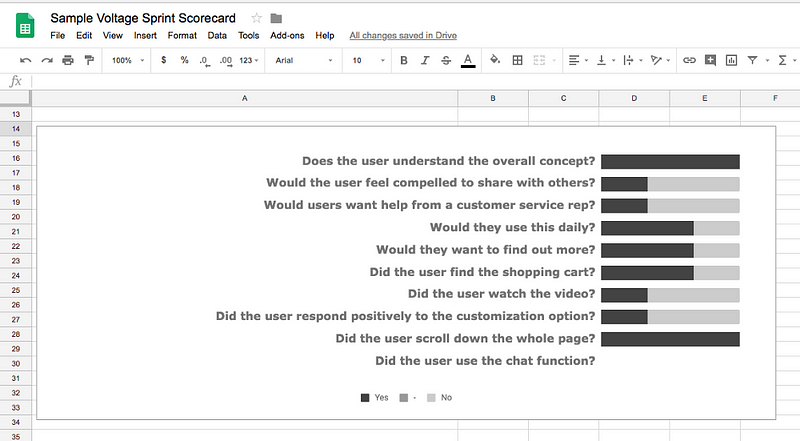
Method Steps
- Download the Voltage Control Scorecard.
- Click on the worksheet with your name on it.
- At the top, you’ll see columns for each tester and the rows of Y/N questions. On the bottom, you’ll see an empty section for recording insights.
- Take a moment to read each of the Y/N questions.
- While observing the interview, if you can confidently answer any of the Y/N questions with a Yes or No, record your answer. If the tester wasn’t completely clear or said contradictory things, mark that question with a “?” for that question. If the topic didn’t come up at all, leave it empty.
- When you hear interesting, provocative, or concerning things from the testers, record them in the insights section at the bottom.
- For each insight, use the drop down to select the current tester’s name, enter the timestamp using the hotkey, and type in the insight.
- Repeat for all interviews.


